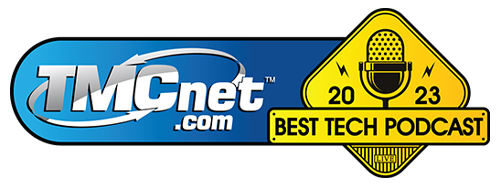EP 16: Embrace the Power of Cloud-Based Collaboration Tools
Posted on August 2, 2023 by Fusion Connect
Join George Schoenstein and Santi Cuellar as they share stories of the historical journey from legacy systems to the dynamic cloud-based platforms that empower seamless collaboration solutions. Discover the undisputable advantages of scalability, automation, and risk mitigation that come with embracing the cloud, while exploring the need for technological evolution in an era of ever-changing possibilities. Tune in to unlock the potential of modern collaboration and prepare your business for a future of endless opportunities. Subscribe now on your favorite podcast platform and stay connected with the ever-evolving landscape of technology.
Watch & Listen
Tech UNMUTED is on YouTube
Catch up with new episodes or hear from our archive. Explore and subscribe!
Transcript for this Episode:
INTRODUCTION VOICEOVER: This is Tech UNMUTED. The podcast of modern collaboration – where we tell the stories of how collaboration tools enable businesses to be more efficient and connected. With your hosts, George Schoenstein and Santi Cuellar. Welcome to Tech UNMUTED.
GEORGE: Welcome to the latest episode of Tech UNMUTED. Today, we're going to take a look at legacy versus where the world's going from a cloud standpoint. In particular, we're going to talk a bit today about how telecommunication services have been delivered historically and the shift that we're seeing in the market. Certainly, part of that is Microsoft Teams and the calling services capabilities within Teams. There's a lot of other broader elements around that. Santi, you had picked up on some things recently. You want to hit on those?
SANTI: I was at the Microsoft 365 Conference in Vegas. This was back in May, and I remember that during the opening keynote, so this is day one keynote opening. Microsoft identified what they call two megatrends. The first one is what they referred to as flexible work, which then in quotes, they pretty much said, really, it's "shifting everything to the cloud." Of course, the second megatrend, which we talk about a lot here, is AI, artificial intelligence.
Here we are. It's 2023. How long have we been talking about moving to the cloud? [chuckles] I feel like it's been at least two decades. Well, that just goes to show you that this flexible work or this migration to the cloud is a journey. This is not something that happens overnight. It has been happening, and it's been happening in pieces, but there's still a lot of people out there that have not moved to a cloud-based solution for other aspects of IT and technology, so it's still happening.
GEORGE: When you specifically look in the telecommunication space, we still see a lot of mid-size to larger organizations included in that, some mid-size to larger municipalities, where they're still running a fixed PBX system with a lot of wires, interconnecting things. They've got cost for the platform. They've got upkeep on the platform. They have software updates to do. They usually have some of these mid-size 1,000, 1,500-user kinds of things we've looked at.
They might have two or three people dedicated to running those platforms. When you go to a cloud platform, you eliminate almost all of that. You take cost out. You take people out of the equation and you get a much more flexible platform that can be deployed more easily. You no longer have a copper wire or some kind of wire running to somebody's desk phone. You might have an IP phone, where you might have that service embedded into something like Microsoft Teams.
SANTI: There you go. Then you're using more of a headset than you are anything else. The conversation seems like it's old but it's still happening today. We're still talking about it. At the end of the day, there are significant advantages to going cloud-based. The first one that everybody talks about which is a good reason, and that is scalability. The fact that a company today can say, "Hey, we're acquiring this other company and they have another 150 employees."
Imagine back in a legacy situation where you had on-premise hardware. You had to figure out how to either keep those two systems separate because maybe it was too much work or too costly or figure out how to move everybody and bring everybody over into one system. If that system has the capacity, great, but if it doesn't, guess what? Now you have additional hardware costs and maintenance fees. Scalability is absolutely one of those major reasons why people want to go to the cloud.
Really, it's an OpEx. Listen, back in the day when you had on-premise stuff, and some people still do, there's a major CapEx involved with that. It's a huge capital outlay in some cases. I think companies want something that's predictable. Hey, give me a monthly OpEx. I know what it's going to be. I can actually budget for this, which is nice because you know what the outcome's going to be.
By the way, even if we did acquire that next company, even if we did go ahead and grow and expand suddenly, at least it's something that I can do the math on because it's an OpEx. How many more users do I need? Listen, the conversation is still the same. It hasn't changed much, but it just proves that here we are, 15, 10, 20 years later still talking about moving to cloud-based solutions, and guess what, the ROI has been standing the test of time, it is still a valid reason.
GEORGE: There's also the automation element. If I have all of these built into a ServiceNow or some kind of other platform that's handling deployment of new gear to employees and setting them up in various systems, I can automate the entire process if it's cloud-based and digital. I can assign you a Microsoft 365 license. I can assign you calling services, I can assign you certain other applications. When you join, it automatically deploys. Many organizations are still not there. I saw it 15-plus years ago at a company I was at. We did an acquisition. It was a single-day acquisition of 1,500 people in the US market.
SANTI: There you go.
GEORGE: We had to deploy PCs, which we did, business cards, which we did. We took over their offices. We had to manually reconfigure a lot of the phones that were in the environment. We ported over many of the numbers to bring them over. It was that piece of, it was a really long tail that did not happen on day one. Some of the other things did like we worked very hard to get PCs, but at the time, even then, it was a fairly heavy manual configuration of those PCs to get them deployed. We were able to do it with brute force. Today, you can very dynamically do a lot of those things.
SANTI: A lot of those things. Absolutely.
GEORGE: That makes a huge difference. It requires fewer people, but it also makes the process for that new employee far more seamless. One existing employee who has some change that takes place. It's a very different approach when you get fully cloud-based. Trying to dig up the stat, I did see an analyst number a couple of weeks ago where less than 10% of organizations from, specifically a telecommunication standpoint, had moved to fully cloud-based platforms.
SANTI: Really? That's actually a very low number, in my opinion.
GEORGE: I was really surprised. There are hybrids in there. There's some--
SANTI: Correct.
GEORGE: That hybrid could be on the end that's closest to the cloud-based environment. It could be 90% is cloud-based, and then there's fixed corporate numbers that are still on an older platform PBX or whatever.
SANTI: Sometimes people can't go 100% cloud because they have certain elements of their communication infrastructure that has to be analog-based and has to be tied to some local machine. That could probably skew that number. I can see it now. It's just some must-have archaic type of analog device that needs to remain tied to something. I am surprised by that number. I would've thought that a lot more. That also means there's a lot of work to be done.
GEORGE: I was really surprised when I saw the stat. I'll look back to dig that up, but I thought that was an interesting one.
SANTI: That is interesting.
GEORGE: Again, it's just that the world is shifting. People expect things to happen almost immediately.
SANTI: Yes. Especially the new generation. Remember, you and I are old. [chuckles] We're Gen Xers. We were around before the internet existed, let's be honest, but the generation that has followed the millennials. Millennials are now in supervisory positions. Millennials are now executives at companies. They're at that level in their life. They were born with the internet at their hands. They expect to have these levels of technologies and processes in place. Any company that is in 2023, who has millennials in their executive team, and they're not at the cutting edge. They're behind. People don't want to work for companies like that. They just don't. They want to work for companies that are keeping up with technology and so, yes, I agree with that.
One thing that I wanted to bring up was, we don't think about this much George, but some of these legacy systems also have maintenance tied to it. I know that's something that we don't-- because again, when you're cloud-based, you don't have to worry about that. Think about it, they have maintenance contracts in place, and these maintenance contracts can be very costly. Forget the hardware, that's one cost but maintenance of that hardware. Then when that thing becomes end of life, what happens? That's the other thing.
GEORGE: That's part of the challenge. In a cloud-based world, which is where things are going, right?
SANTI: Yes.
GEORGE: Much more dynamic from an upgrade standpoint. You get new features and functions that are just integrated into the platform, typically, you don't even know they've happened, and in many cases, don't require an end user to really do anything. Where in the old world of application-based stuff that you may have deployed on-site or deployed in a co-location center or wherever it's at, there's upgrade cycles and you have the risk in that upgrade cycle of something breaking that might be unknown. You may have customized something and the vendor who's supplying the software, you apply the upgrade, and then all of a sudden, in the case of what we talked about, your phones don't work, right?
SANTI: Correct.
GEORGE: That's a big risk.
SANTI: It's a big risk. Man, risk mitigation could be a challenge. I think the cloud base helps mitigate that, right?
GEORGE: Yes. You get resiliency in the cloud, you oftentimes get redundancy. You have an easier path to backups. If you lose a piece of physical gear and it's legacy and let's say, there's still a lot of things out there on legacy platforms that the underlying gear isn't produced anymore, it's not in an X86 or a modern-based platform, it's in something else. It's in an old mainframe, that creates even more risk. How do you back that up? How do you recover that? What if that physical center or wherever that sits is damaged? We've seen even in the last couple of weeks a lot of storms that have disrupted services have taken power out and other things.
If that's what's in your environment, you've created another level of risk there of not being able to operate as a business. There's a lot that goes into this. There's so much you pick up with the cloud that I don't think everyone still recognizes the value of, and I realize sometimes it's hard to move off something old onto something new, but man when you look to telecommunication stuff, this is really easy.
SANTI: It is easy, George, but I'm going to say something that maybe isn't politically correct. I think people do recognize the value of cloud from a business perspective. I'm going to go on a limb and say that many times, that's not always the case, but many times I think the pushback to move to the cloud actually comes from the technologists within the company. I think it's a fear of job security or, "Hey, I've been doing this hands-on for the last 20 years. You're asking me now to take this entire infrastructure, move it to the cloud, and now I don't have control of it anymore." Which is not the case but I think that's the mindset.
I just believe that a lot of times it's the technologists that get in the way of technology advancements and I think it's the sense of, I don't know, job security or fear or something. I know this may not strike a chord very nicely with some of the folks, but I really do think that some of the hold-up, the bottleneck is the technology folks themselves. What we need to think about is, it's like AI. Listen, we should always be looking at what is coming next and how do I align my skill sets, my role, my contribution to an organization with what's coming next. I think that if we had that mind shift in many organizations, I think we would see an increase, honestly, in folks may be moving to the cloud but that was my two cents on that.
GEORGE: You were nice about the description, that that might be what's going on. We've seen it. We've both been in this deliberate conversation. There are oftentimes people who own a legacy platform. Maybe it's the unknown of will I lose control to be able to manage it the way I want to manage it but part of it is that second piece you said, it's taking advantage of the new technology that's available in the market. Again, AI is a great example. We talk about it constantly on this podcast. We've leaned in heavily on our team. We've said that as well. Even today, we have a call with the entire marketing team today to look at opportunities to build AI-based applications or automation applications based off the Microsoft platform. You've got to be doing that, right?
SANTI: Yes.
GEORGE: You've got to be doing that as an organization, you've got to be doing it as a team, you've got to be doing it as an individual. To not take advantage of that, at some point, you will be left behind, right?
SANTI: Yes. You have to relearn, you always have to relearn. That is just as things evolve, you need to be willing to evolve with them. We keep saying it but this is a perfect example that honestly, this cloud number, that stat that you just called out early in this podcast, is still surprising to me. I think a lot of it has to do with that, right?
GEORGE: Yes.
SANTI: I guess at the end of the day, cloud still makes a lot of sense. You're going to get, obviously, that increased productivity and that security that's inherent with the cloud. You're going to get a more unified platform instead of a hodgepodge environment. Even if you have a hybrid that's even worse. That uniform platform where you can just manage everything from a centralized location, and like you said, thanks to here's the magic words, API, we can tie stuff together and people can work in management platforms that they're already used to working on a daily basis to manage this environment as well. To me, it makes sense. It continues to make sense. I've been doing this, I know you've been doing this for a long time too. My mind has not changed. Moving to the cloud is absolutely the right thing to do and so--
GEORGE: I agree.
SANTI: That brings this interesting dialogue to a close. If you have not done so, please subscribe to this podcast on your favorite podcast platform. Don't forget, you can also follow us on YouTube. Until next time, George, let's stay connected.
CLOSING VOICEOVER: Visit www.fusionconnect.com/techunmuted for show notes and more episodes. Thanks for listening.
Episode Credits:
Produced by: Fusion Connect
Listen on Your Favorite Podcast Player:


Expert insights, exclusive content, and the latest updates on Microsoft products and services - direct to your inbox. Subscribe to Tech ROUNDUP!
Tech UNMUTED, the podcast of modern collaboration, where we tell the stories of how collaboration tools enable businesses to be more efficient and connected. Humans have collaborated since the beginning of time – we’re wired to work together to solve complex problems, brainstorm novel solutions and build a connected community. On Tech UNMUTED, we’ll cover the latest industry trends and dive into real-world examples of how technology is inspiring businesses and communities to be more efficient and connected. Tune in to learn how today's table-stakes technologies are fostering a collaborative culture, serving as the anchor for exceptional customer service.
Tech UNMUTED is a production of Fusion Connect, LLC.

 Amazon Music
Amazon Music Podcast Index
Podcast Index TuneIn
TuneIn Listen Notes
Listen Notes